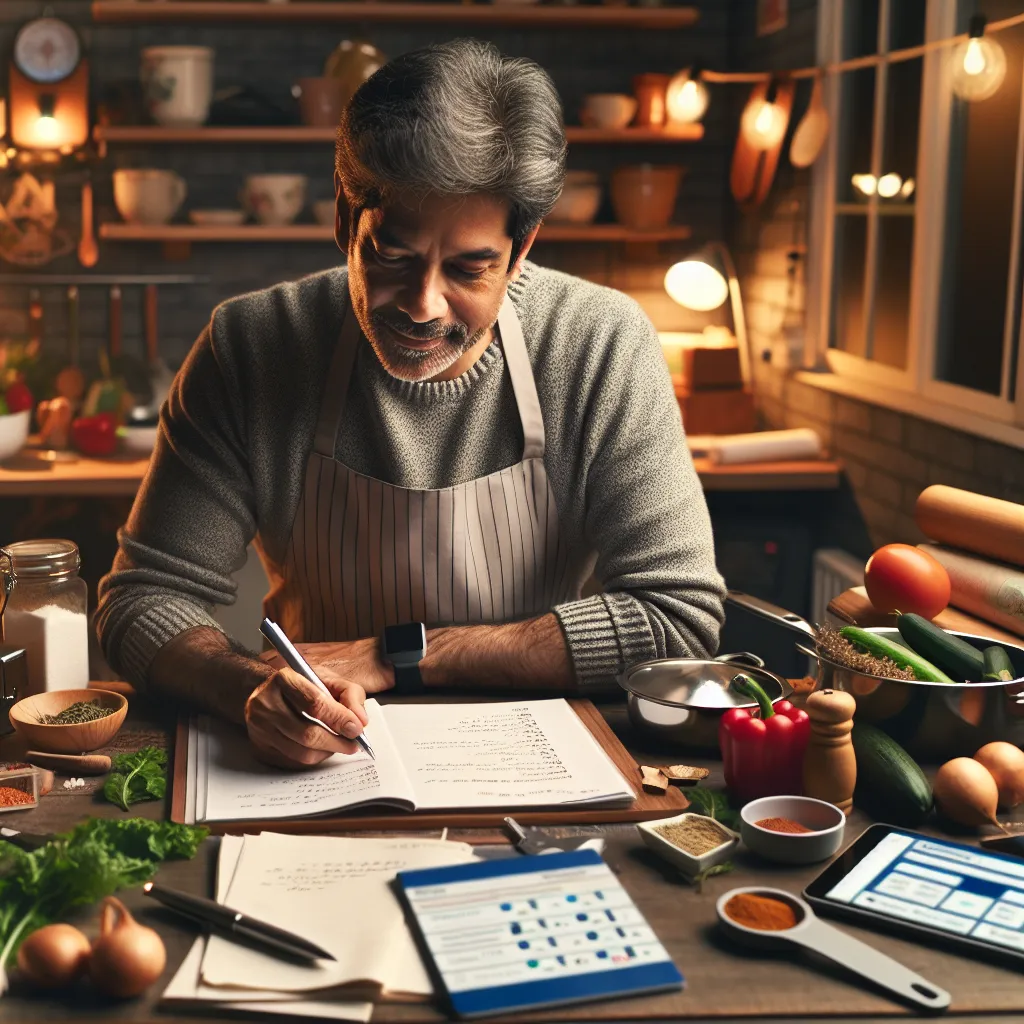Are you looking for a fun and practical way to improve your English skills? Look no further than the kitchen! Recipe writing is an excellent method to enhance your language abilities while indulging in your culinary passions. In this article, we’ll explore effective Tips For Learning English Through Recipe Writing, helping you spice up your vocabulary, grammar, and overall language proficiency.
 English recipe writing
English recipe writing
Why Recipe Writing is a Perfect Ingredient for Language Learning
Recipe writing offers a unique blend of creativity and structure, making it an ideal tool for English learners. Here’s why:
- Practical vocabulary: Cooking terms are used in everyday life, making them valuable for real-world communication.
- Clear instructions: Recipes require precise language, helping you improve your ability to give and follow directions.
- Cultural exposure: Exploring recipes from English-speaking countries introduces you to new cultures and traditions.
- Engaging content: Writing about food is inherently interesting, keeping you motivated in your language learning journey.
Essential Tips for Learning English Through Recipe Writing
1. Start with Simple Recipes
Begin your culinary language adventure with straightforward recipes. This approach allows you to focus on basic vocabulary and sentence structures without feeling overwhelmed.
Example:
- Simple recipe: “Boiled Eggs”
- Ingredients: Eggs, water
- Instructions: Place eggs in a pot. Cover with water. Boil for 7 minutes. Remove and cool.
2. Expand Your Cooking Vocabulary
As you progress, introduce more complex recipes and ingredients to broaden your culinary lexicon.
Key areas to focus on:
- Cooking verbs: Chop, sauté, simmer, bake
- Kitchen tools: Whisk, colander, grater, spatula
- Measurements: Teaspoon, cup, ounce, gram
3. Master Imperative Sentences
Recipes heavily use imperative sentences, which are perfect for practicing giving instructions.
Example:
- “Preheat the oven to 350°F (175°C).”
- “Whisk the eggs and sugar until light and fluffy.”
4. Practice Sequencing Words
Learn to use transitional words and phrases to create a logical flow in your recipes.
Common sequencing words:
- First, next, then, finally
- After that, meanwhile, subsequently
5. Incorporate Descriptive Language
Enhance your writing by using adjectives and adverbs to describe tastes, textures, and cooking processes.
Example:
- Instead of “Cook the onions,” write “Gently sauté the onions until golden and fragrant.”
6. Study Authentic Recipes
Read and analyze recipes from popular English-language cookbooks or websites. Pay attention to the structure, vocabulary, and tone used.
Recommended sources:
- BBC Good Food
- Allrecipes
- The New York Times Cooking
7. Create a Cooking Blog or Vlog
Take your recipe writing to the next level by starting a blog or YouTube channel. This will motivate you to regularly practice your English writing and speaking skills.
 Cooking blog in English
Cooking blog in English
8. Join Online Cooking Communities
Engage with English-speaking cooking enthusiasts through forums or social media groups. This will provide opportunities for real-world language practice and cultural exchange.
Popular platforms:
- Reddit’s r/Cooking
- Facebook cooking groups
- Instagram food communities
9. Translate Your Favorite Recipes
Challenge yourself by translating recipes from your native language into English. This exercise helps you think in English and find creative ways to express culinary concepts.
10. Focus on Measurement Conversions
Learn to convert measurements between different systems (metric and imperial) to improve your numeracy skills in English.
Example:
- 1 cup = 240 ml
- 1 pound ≈ 454 grams
Common Mistakes to Avoid in Recipe Writing
- Overcomplicating instructions: Keep sentences clear and concise.
- Forgetting to list all ingredients: Always double-check your ingredient list.
- Using vague measurements: Be specific (e.g., “1 large onion” instead of “some onion”).
- Neglecting preparation steps: Include important details like “preheat the oven” or “grease the pan.”
Next Steps: From Kitchen to Fluency
Now that you’ve got the recipe for success, it’s time to put these tips into practice. Here are some suggestions to continue your English learning journey through cooking:
- Create a personal recipe book in English, compiling your favorite dishes.
- Host an English-language cooking show for friends or family.
- Participate in online recipe-sharing challenges or contests.
- Read English-language food magazines to further expand your culinary vocabulary.
Learning English through recipe writing is a delicious way to improve your language skills. By following these tips and immersing yourself in the world of culinary English, you’ll soon find yourself cooking up fluency in no time. Remember, like perfecting a recipe, mastering a language takes practice, patience, and a dash of creativity. So, grab your apron, pick up your pen, and let’s get cooking – linguistically and literally!




